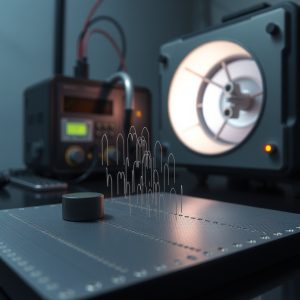
HEADLINE
“A Black Hole’s Binge: Unlocking the Secrets of a Supermassive Monster’s Meal Schedule”
SUBHEADLINE
NASA Telescopes Decode a Supermassive Black Hole’s Snack Schedule, Revealing a 3.5-Year Cycle of Stellar Devourment and Spectacular Cosmic Displays
In a groundbreaking discovery that has left astronomers abuzz, researchers from NASA and the European Space Agency (ESA) have used advanced telescopes to decode the snack schedule of a supermassive black hole in a distant galaxy. By analyzing data from Chandra X-ray Observatory, Swift, and ESA’s XMM-Newton, scientists have revealed a 3.5-year cycle of stellar devorment, during which the black hole indulges in spectacular bursts of X-ray and UV light.
At the heart of this cosmic phenomenon lies a star in orbit around the supermassive black hole, situated approximately 860 million light-years from Earth in a distant galaxy. The researchers have determined that the star’s highly elliptical orbit leads to periodic disruptions, during which tidal forces pull material from the star, producing two tidal tails of “stellar debris.” This process occurs every 3.5 years, resulting in spectacular bursts of X-ray brightness as the disrupted material returns to the black hole and loses energy.
The study has shed new light on the behavior of supermassive black holes, which have long been a topic of fascination for astronomers. By decoding the snack schedule of this cosmic entity, researchers have gained valuable insights into the underlying physics and can now predict future events with greater accuracy. The findings also highlight the importance of tidal disruption events (TDEs), which signal that a star is torn apart and partially ingested after flying too close to the black hole.
THE MECHANICS OF A BLACK HOLE’S BINGE
The researchers have pieced together a detailed understanding of the process by which this supermassive black hole indulges in its 3.5-year cycle of stellar devorment. The star, situated in a highly elliptical orbit around the black hole, is subjected to intense tidal forces as it approaches perihelion (the point at which the star is closest to the black hole). During this period, the gravitational forces exerted by the black hole pull material from the star, producing two tidal tails of “stellar debris.”
As the star recedes from its perihelion passage, the disrupted material returns to the black hole and loses energy, leading to a large increase in X-ray brightness. This process repeats every 3.5 years, resulting in spectacular bursts of light that are detectable by telescopes such as Chandra X-ray Observatory, Swift, and ESA’s XMM-Newton.
PREDICTING THE FUTURE
By analyzing data from the three telescopes, researchers have been able to predict when future meals will take place. This has significant implications for our understanding of supermassive black holes and their behavior. The study has provided valuable insights into the underlying physics and has enabled scientists to refine their models of these cosmic entities.
The discovery also highlights the importance of continued monitoring of these celestial events, which provide a unique window into the workings of supermassive black holes. By studying these events in more detail, researchers hope to gain a deeper understanding of the underlying physics and improve our ability to predict future events with greater accuracy.
CONCLUSION
This groundbreaking discovery demonstrates the power of modern astronomy to uncover secrets about the universe’s most mysterious objects. By decoding the snack schedule of this cosmic entity, researchers have gained valuable insights into the underlying physics and can now predict future events with greater accuracy. The study has significant implications for our understanding of supermassive black holes and their behavior, and serves as a reminder of the importance of continued monitoring of these celestial events.
In conclusion, the study provides a fascinating glimpse into the workings of a supermassive monster’s meal schedule, shedding light on the complex physics that governs these cosmic entities. As astronomers continue to unravel the secrets of the universe, this discovery serves as a testament to the power of human ingenuity and curiosity.







“I’m Brooklyn Keith, material mover by day and amateur astrophysicist by night. The article on Nvidia’s earnings is setting off alarm bells for me – if the market’s record run isn’t sustainable, it could spell disaster for investors. I’ve seen this happen before with stocks like Tesla, where a single misstep can send prices plummeting. My advice? Be cautious, diversify your portfolio, and keep a close eye on Nvidia’s earnings report coming up in August. The stakes are high, and one wrong move could leave you reeling.”
I’m shocked by Brooklyn Keith’s comment, not because of the warning itself, but because it’s completely unrelated to the article about supermassive black holes! I mean, what does Nvidia’s earnings report have to do with unlocking the secrets of a cosmic behemoth like Sagittarius A*? It’s like comparing apples and oranges.
And let’s be real, Brooklyn Keith, the universe doesn’t care about your investment portfolio or the stock market. The laws of physics are still governing the behavior of black holes, regardless of whether Nvidia’s earnings are sustainable or not. I’d love to see an article on how the gravitational forces at play in a supermassive black hole could potentially disrupt the financial markets, now that would be a fascinating read!
But back to the matter at hand, have you considered the implications of sustainable aviation fuels on our ability to study these cosmic wonders? If we can’t even get our fossil fuel addiction under control, how are we going to power the next generation of telescopes and space missions? It’s a sobering thought, and one that I think is far more relevant to this article than Brooklyn Keith’s warning about Nvidia’s earnings.